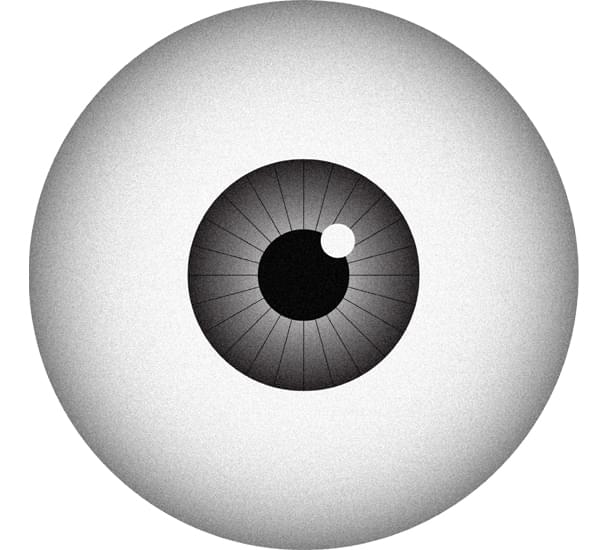Creating Designer Babies Isn’t Just Unethical. It’s a Crushing Liability.

Creating Designer Babies Isn’t Just Unethical. It’s a Crushing Liability.
Quick, answer me: If you could spare your child a genetic disease, would you? Of course you would. Here’s a more ambiguous case: Would you give her biological advantages that she’d bequeath to your descendants? You hesitated. How about this: What if you could contribute to the development of such a genome-editing technology? A few years ago, I debated these issues at the invitation of the partners of a venture capital firm (not DCVC).
In the past, the firm had conducted explorations in human fertility and the genetics of haploid cells — the eggs and sperm that combined to make you you. I knew other VCs were contemplating a technology called in vitro gametogenesis (IVG), where adult cells are induced to revert to stem cells, and thence become eggs or sperm. IVG might mean the end of human infertility, and artificial gametes could be edited so that the genetic diseases of parents wouldn’t be passed onto their children. The firm wondered: could traditional in vitro fertilization (IVF) or IVG be combined with gene-editing to help couples have healthy offspring? If it were possible, should they create a company that sold such a service, perhaps through fertility clinics?
I knew it was it was possible to edit human embryos using CRISPR-Cas9. As early as 2015, a Chinese scientist named Junjiu Huang had installed a normal beta thalassemia gene in abnormal embryos, then destroyed his work; 10 papers, mostly written by Chinese scientists, had described similar experiments. But creating living persons from edited gametes or embryos would cross a legal and moral border.
I organized a Jeffersonian dinner, named for the spirited conversations America’s third president hosted at home, where the firm could argue privately. I distributed a reading list, including a 2017 report by the National Academy of Sciences, “Human Genome Editing: Science, Ethics, and Governance.” I booked a suite at a hotel in Boston with a good restaurant — and locked the door.
Off-target effects
At the same time as the dinner, a little-known scientist 8,000 miles away had decided to cross the border. In 2018, He Jiankiu, a biophysicist at the Southern University of Science and Technology in Shenzen, announced he had altered the DNA of two embryos and implanted them in a woman who had given birth to twin girls. Their names were Nana and Lulu. (Later, the world would learn about a third child from another mother.)
Scientists everywhere condemned He’s experiment. 122 Chinese researchers wrote a letter declaring his project “crazy” and “unethical.” David Liu, a researcher at the Broad Institute in Cambridge, MA, wondered aloud, “What was the unmet medical need for these patients?” The edit was not so much a cure, as a bestowing of immunity. He Jiankiu had eliminated a gene named CCR5, because people without working copies of the gene resist infection by HIV. But the results were messy: He had created 31 embryos, yet many possessed so-called “off-target” effects, or unintended edits; one of the little girls carried a normal copy of CCR5, a genetic mosaicism. She might possess no or only limited resistance to HIV. To most, the experiment felt like a stunt.
But not every scientist was so dismissive of germline editing. George Daley, the Dean of Harvard Medical School, cautioned that humanity shouldn’t penalize the idea of germline editing because its “first steps” were off track. The Harvard geneticist George Church told me there was a moral obligation to edit the germline if it could be done safely.
The general view among scientists, articulated in the National Academy report, is that editing the human germline would be laudable if it were both safe and used to prevent illness, but that medically unnecessary enhancements were morally impermissible. The scientific consensus reflects public opinion: a poll shows about seven in ten Americans favor using gene-editing to prevent an incurable or fatal disease that a child would otherwise inherit; but the same numbers oppose using the technology to alter the child’s intelligence or give them attractive features.
Unwelcome surprises
In 2019, the dinner guests didn’t know about He Jiankiu’s experiment, but none of us would have been shocked to hear the news. Inside the hotel room, there was broad agreement about the science: everyone agreed that both IVG and genetic editing of gametes or embryos were immature technologies. Still, we nodded, they felt inevitable.
But the partners had very different moral intuitions about editing the germline. One said there was a categorical imperative to eliminate autosomal, or single-gene, diseases such as cystic fibrosis or Huntington’s disease. What did it matter, so long as they were selecting naturally occurring alleles (one of the alternative forms of a gene in any species)? The partner went further: If germline editing could reduce the incidence of polygenic diseases like heart disease or diabetes, caused by the interplay of many genes and the environment, they should explore the technology.
But other partners felt equally strongly that germline interventions would seldom be medically justifiable and could never be approved as commercial therapies by regulatory agencies. There were already better alternatives: parents with heritable genetic diseases could use genetic counseling with IVF and PGD. In the future, doctors might sort sperm in fertility clinics to select traits or screen for the father’s epigenetic damage, a technique that would not require germline editing. That was the real opportunity.
Some felt more strongly. One partner insisted that germline editing, especially to confer enhancements, was a therapeutic and moral dead end. “It’s wrong,” he muttered. “Just wrong.” Genes were conserved for reasons. Some genes that were detrimental later in life might be important early, like genes necessary for embryonic development that are implicated in senescence; others might confer resistance to diseases within a population, yet make some individuals sick, such as the genes for sickle cell anemia. (Indeed, we would later learn, if Nana and Lulu enjoyed immunity to HIV infection, they might also be more vulnerable to influenza.) It was only the beginning of the biological century, the partner reminded us; we understood little. We didn’t know enough to mess around with human inheritance.
Finally, the partners were dissuaded by the practical realities of clinical research and regulation. Toward the end of dinner, one partner, a physician who had been quiet for most of the evening, pointed out that no clinical trial would detect the adverse effects of genome editing in a reasonable period of time. It wasn’t possible to conduct large clinical trials over many decades and catch rare events. Thus, a gene-alteration with an unintended side-effect might not become apparent until after puberty, or well into adulthood. The liability could be crushing for any commercial organization.
Most new medicines failed; all evolved before they entered the clinic. “But here,” the partner said, “your first dose would be a person.” They sat, appalled, thinking of all the clinical trials that had delivered unwelcome surprises. How many children would be born with abnormalities, we asked, before germline editing worked? They imagined class action lawsuits, each attached to a tragedy. Thoughts of liability recalled the firm to its duties as life scientists and the broader conception of risk. “First do no harm,” they had promised. But genetic editing, especially of the germline, possessed an insuperable difficulty: they wouldn’t know for a long time if harm had been done.
As a body, they agreed: other firms somewhere in the world would probably try germline editing; they hoped their work would proceed within a regulatory system of ethical and technical standards. One day, who knows when, germline editing would be a clinical option for parents, although it was hard to know how widely it ever would be used, unless genetic enhancement became legal and socially acceptable. But they wanted no part of it.











